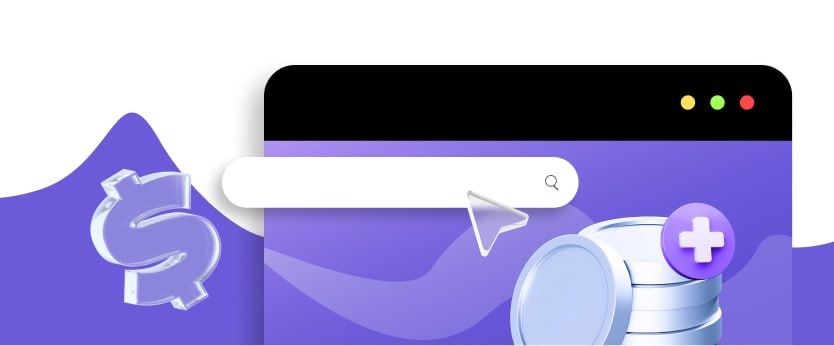A transaction ID (also referred to as TXID or Txn ID) is a unique identification number that functions as a digital fingerprint on all payments. It helps track, confirm, and authenticate every money transfer safely between different banking and electronic payment systems. You transfer money using UPI (Unified Payments Interface), send funds online, or pay using a card – a TXID lets you verify and track the transaction.
In the digital payment process, a TXID allows you to locate the transaction and access details such as amount, date, time, and reference number.
What Is a Transaction ID?
A transaction ID is an alphanumeric unique identifier issued for each successful money transfer. It allows each payment to be traced and verified, making it convenient for users and merchants to monitor finances hassle-free.

Purpose and Benefits of a Unique Transaction ID
- Identification. A unique ID is assigned to a specific payment to prevent confusion with multiple transfers.
- Verification. TXIDs allow users to check the status of a transaction or whether a transfer succeeded, was in progress, or failed.
- Record-keeping. These IDs facilitate accounting, allowing businesses to match payment records with invoices on multiple platforms.
- Customer support. When you contact customer care to rectify the problem or complain about wrongful amounts, using your TXID makes assistance easy.
In short, TXIDs aid in payment verification securely with transparency and traceability both for receiver and sender.
How Transaction Numbers Work
Every system – online banking, mobile banking, or UPI – has its own type of transaction number or reference code. Common types include:
- Alphanumeric combinations. For example, “TXN3872XG9”.
- Numeric codes. Example: “123456789”.
- Reference numbers. Such as “REF2024ABC”.
- Unique Transaction References (UTRs). Used for bank-to-bank transactions.
These identifiers are easy to trace and authenticate and ensure each specific transaction remains unique.
How to Check Transaction Status Across Different Platforms
TXIDs verify payments, track issues, and protect sensitive financial records made between two or more platforms. How you find them depends on the specific system you’re using.
Bank Statements and Receipts
When you make a payment through a bank – via card or transfer – the system usually assigns a unique identifier such as a Transaction ID, Reference Number, or Confirmation Code. You can find your transaction ID number in several places:
- Online banking. Log in and visit your transfer history. Select one payment to view transaction details and look for labels such as “Transaction ID”, “Ref No”, or “Confirmation Code.”
- Monthly statements. Digital statements often display identifiers beside each transfer entry.
- Receipts. For personal payments, check the bottom of your receipt for a reference or transfer number.
Though formats vary, they all serve one purpose – to uniquely identify your transfer.
Payment Platforms
Digital payment platforms automatically assign a transaction number to every completed or attempted payment. These IDs are key to tracking transfers, resolving payment issues, and confirming a transfer’s status. Below are examples from common platforms.
Stripe
Stripe enables merchants and users to locate payment information easily through the dashboard:
- Open the dashboard. Log in to your Stripe account.
- Go to Payments. Click the “Payments” tab in the left-hand menu.
- Select a transfer. Choose the relevant payment.
- Locate TXID. Look for identifiers labelled “txn_” or “ch_” in the transaction details – this is your transaction ID.
Stripe includes TXIDs in reports and API responses, simplifying retrieval and integration with accounting software.
Paytm (UPI Settlements)
Paytm displays UPI transaction ID tracking clearly in the app’s transaction history:
- Open the Paytm app. Launch it on your smartphone.
- Visit Balance & History. Tap this section to view your transaction list.
- Select a payout. Tap the relevant UPI payment.
- Find the UPI ID number. The identification appears along with details like amount and date.
You can also track UPI transaction ID step-by-step using this detailed guide.
Paytm (NEFT Transfers)
Using Paytm, you can initiate an NEFT transfer and track it with the UTR (Unique Transaction Reference) number:
- Open the Paytm app. Log into your account via desktop or mobile.
- Visit History. Tap on the transfer linked to the NEFT payment.
- Find the UTR number. It serves as a transaction reference similar to a TXID and can be used for tracking and reporting.
UTR numbers are particularly useful for verifying interbank transfers or resolving issues with your bank.
Cryptocurrency Transactions
Cryptocurrency networks generate a transaction hash–commonly called a TXID–for every operation. This hash is publicly visible and used to verify a transaction’s status, amount, and wallet addresses:
- Access your wallet or exchange. Open the app or website you used for the transfer.
- Visit History. View your list of recent crypto transfers.
- Copy the TXID. It typically appears as a long alphanumeric string labelled “TXID” or “Hash.”
- Verify it using a blockchain explorer. Paste the TXID into the relevant blockchain explorer – for example, Blockchain.com for Bitcoin or Etherscan.io for Ethereum – to check confirmation status and transaction details.
Crypto wallets and exchanges also display payment status, amounts, and receiver information.
Paykassma Payment Gateway
If you’re using Paykassma, each processed transaction includes a TXID. To track your transaction ID:
- Log in. Access your Paykassma merchant account.
- Open the Transactions section. Use the sidebar to navigate.
- Find the transfer. Search for the specific payment.
- Locate the TXID. It appears as a unique reference beside payout details.
Refer to Paykassma’s official documentation for more information on using APIs or reports for automated transaction tracking.
Where to Find Your Transaction ID
Online and Mobile Banking
Log in to your online banking or mobile app, view your transaction history, and select a payment to view its transaction details. Look for fields such as “Transaction ID”, “Ref No”, or “Confirmation Code”.
Paytm App
Using Paytm is perhaps the easiest way to retrieve UPI transaction status:
- Open the app and proceed to Balance & History.
- Select on the relevant payment.
- View details through the transaction ID, which includes amount, timestamp, and UPI ID.
If your payment is delayed, you can use TXIDs to verify status or report an error.
Cryptocurrency and Payment Gateways
For cryptocurrency, use a blockchain explorer to verify transaction details through the TXID hash. For gateways like Paykassma or Stripe:
- Sign in to your account.
- Go to the Transactions section.
- Find the TXID beside payout information.
Such tracking improves record-keeping and payment accuracy.
Transaction Tracking and Verification
Tracking your payments using TXIDs ensures transparency and security. Whether you’re handling a specific payment or monitoring TXIDs for business reconciliation, here’s how they help:
- Check transaction records easily across multiple accounts.
- Verify successful and pending payments.
- Identify suspicious activity quickly with monitoring systems.
- Confirm details like amount, date, and sender.
Transaction tracking helps businesses accept payments seamlessly and maintain accurate transaction histories.
Troubleshooting Common Issues

Even secure sites have payment glitches. Incomplete or incorrect TXIDs, data disparity, or transfer failure can occur. To troubleshoot frequent problems:
- Find your transaction ID in confirmation emails or SMS notifications.
- Find the correct site (UPI app or online banking).
- Verify the TXID and payment status.
- Contact customer support if the problem persists.
Continuing this way ensures errors like incorrect amounts or delayed UPI transfers are addressed promptly and securely.
Security Implications of Publishing TXIDs
Although a TXID is only a reference code, in some systems it may reveal metadata such as timestamps or payer identifiers. Sharing them on public channels could disclose information to scammers.
To stay safe:
- Don't publish TXIDs on public channels.
- Use encrypted, secure storage for records.
- Regularly check TXIDs for suspicious activity.
- Be alert to strange activity or data breaches.
Good record-keeping and strong payment security practices give users confidence and peace of mind.
Related Payment Guides
- UPI Transaction ID Check
- What is UTR Number?
- IMPS vs UPI
- What Are Recurring Payments?
- What is a Payment Gateway?
If you run a business and need to accept online payments, these solutions may help:
Conclusion
By knowing and using transaction IDs, you can track UPI payments, resolve the issue of lost transfers, and manage your finances effectively. Knowing the status of your UPI transactions – and verifying them with TXIDs – reduces mistakes and adds security across platforms.
Online Payment Company #1
Online payment solutions for all types of businesses since 2019
Subscribe to stay updated
on industry news, insights, and exclusive offers


